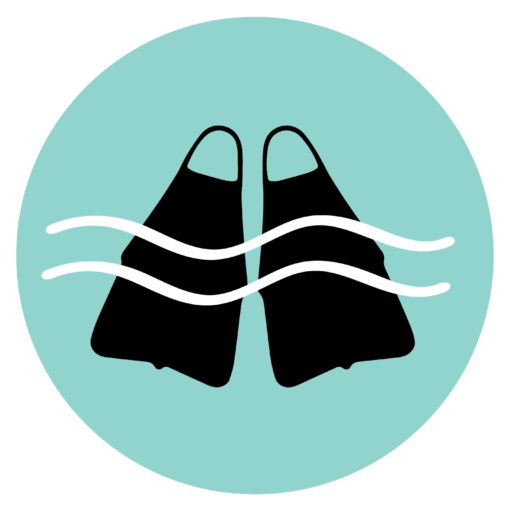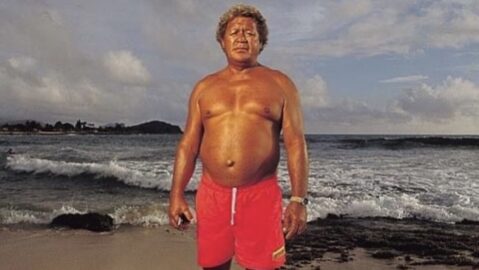Richard “Buffalo” Keaulana easily makes my list of the top five bodysurfers of all time. But he is so much more than just a bodysurfer.
Buffalo was practically homeless for much of his childhood and spent most of his time at Makaha Beach on Oahu where he would spearfish daily for food. In fact, Keaulana spent so much time in the ocean as a kid that his mother said he was like a “water buffalo,” which is how he earned his nickname.
He was a talented diver, fisherman, and bodysurfer from a young age, and would eventually become a lifeguard and legendary waterman.
Buffalo the Bodysurfer
Buffalo held his lifeguarding post at Makaha—the world’s first premiere big wave spot—from 1969 to 1995, saving countless lives during his tenure. Keaulana was considered by many to be the best bodysurfer in the Hawaiian islands, a result of thousands of hours spent in the water at Makaha:
“Buff could surf well, but his real strength was as a bodysurfer,” writes Stuart Holmes Coleman in Fierce Heart: The Story of Makaha and the Soul of Hawaiian Surfing. “Without using flippers, he could swim into the waves and ride them on his stomach all the way to shore.”
“He looked so natural streaking across the waves like a seal. I actually expected him to turn and swim out to sea when he was done,” said Greg Noll. “He was one of the best bodysurfers on the face of the earth. If you’ve ever watched guys get right in the pocket and do the roll deal, Buffalo was the guy who invented that.”
Buffalo’s Legacy
Between 1954 and 1958, Buffalo won the bodysurfing contest at the Makaha International Surfing Championships four times. Competing at his home break against the world’s best surfers from Hawaii, Peru, California, and Australia, Buffalo made his ancestors proud by winning at a sport they had been practicing for centuries.

An article titled “Body Busters” from Volume 2, issue 4 of SURFER magazine shows Buffalo bodysurfing the infamous shore break at Sandy Beach in the early 1960s.

“Although surfing was becoming more glamorous,” Coleman writes, “bodysurfing was still revered as the purest and most original form of wave-riding. Whereas most people could only catch the breaking wave and ride the white water straight toward the beach, bodysurfers like Buffalo learned to catch the rising swells and ride them at an angle.
“Positioning himself right in the front of the curl of the wave, he was the first to be able to get fully barreled in the tide, then roll up the wave’s face upside down, come down with the lip, and continue riding. Nobody had ever seen maneuvers like that, and the wide-eyed crowds on the beach would whistle, clap, and yell.” – Fierce Heart (p. 55-6)
BBBSC Makaha
In 1980, Buffalo established his own contest—Buffalo’s Big Board Surfing Classic—which features many versions of wave-riding including bodysurfing, canoe surfing, SUP, tandem bully board, tandem longboard, alaia, and paipo.
According to Buffalo’s son Brian, a legendary waterman in his own right, “watching his father’s meet is like seeing the essence of old Makaha and what it means to be a real waterman. ‘In just a couple of days, you see our whole lifetime—canoe surfing, bodysurfing, paipo boards, team surfing, you name it.’” – Fierce Heart (p.297)


I had the immense pleasure of meeting Buffalo at his contest in 2018, and was stoked to spend time with him. At 83 years old, Uncle Buff was still vibrant—smiling, cracking jokes, and telling stories the entire time. No doubt a lifetime spent in the water at Makaha had contributed to his sunny disposition.
What I learned from Buffalo is that riding waves is about bringing joy into your life, and sharing that joy with those around you—that’s the real beauty of surfing.


